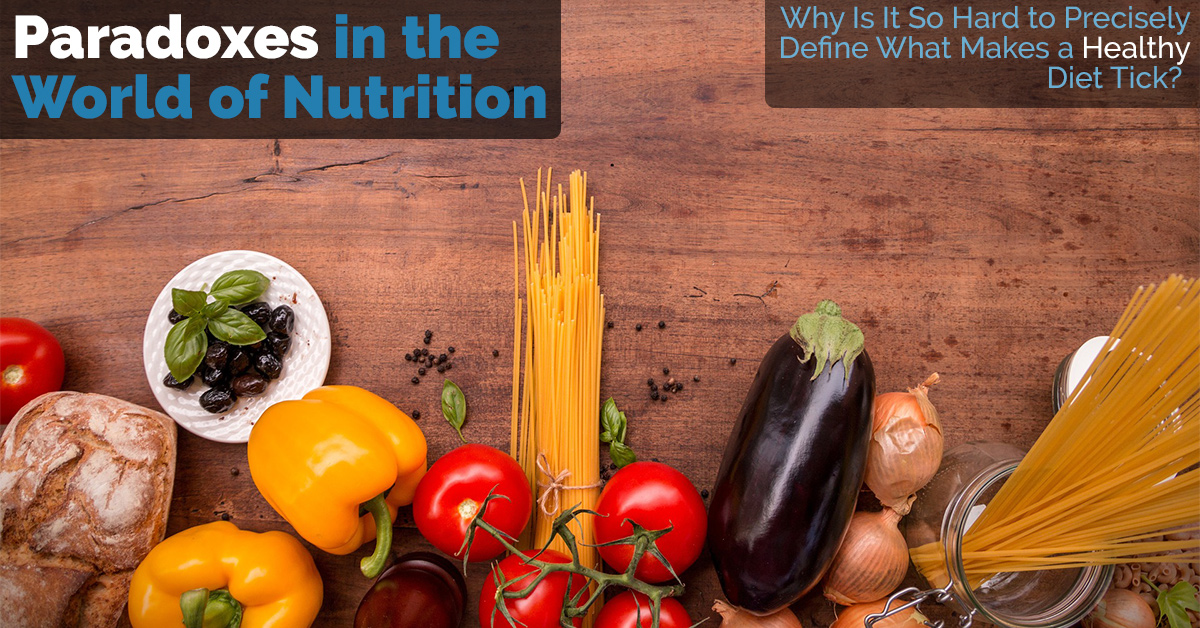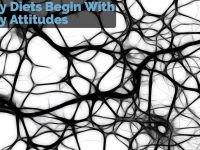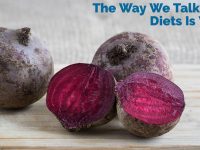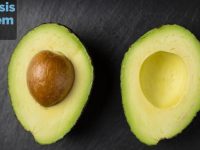The world of nutrition is filled with paradoxes. We think we know something, and know it true, only to discover that outside of our curated data pool there exists a second pool that apparently defies our own data. These paradoxes are part of what make nutrition hard, but also simple—it’s why you can study nutrition academically and gain some deep insights, but also why over seven billion people across the world manage to eat a diet healthful enough to survive into their seventies and beyond, with only a relative handful succumbing to diseases that we can definitely trace back to poor nutrition.
The first paradox to become well-known—and perhaps the only paradox the average person could name—is the famed French paradox. If you’re unfamiliar with this paradox, it’s essentially this: people in France consume greater amounts of saturated fat than Americans, yet suffer less from heart disease. Through the years, a number of factors have been targeted as the reason for this apparent discrepancy, such as wine, “healthy fat” consumption (e.g., omega-3s from fish, olive oil, etc.), greater fruit and veggie consumption, etc., but none by themselves can fully explain it. We’ve also come down off our “all saturated fats are bad” train (most of us anyway), so that builds into it, yet the “paradox” remains; we don’t know the exact reason why the French have fewer cases of heart disease.
There are other paradoxes as well, though perhaps the rest are only well-known to nutritionists like myself. For example:
The Micronutrient Paradox
We know that a diet high in foods that naturally contain a lot of vitamins and minerals promotes health, and we know that vitamins and minerals in those foods are a part of that health promotion. When we package these nutrients into a pill, however, it yields zero health benefit to the consumer except when they are overtly deficient in a nutrient. Despite our best efforts, we don’t have a conclusive reason why—possible solutions include nutrient-to-nutrient interactions between nutrients in a plant, a role of phytonutrients in health, the fiber, and decreased overall caloric consumption within a diet high in these foods. Quite likely, it’s a combination of all the above factors, because if we isolate any one of them we see only minor (or even no) benefits.
(If you’re interested in reading more about this, I wrote an entire e-book on the topic. Check it out from Amazon: The Multivitamin Lie: How and Why You Only Need Food for Perfect Nutrition)
The Alcohol Paradox
Alcohol is a toxin. It’s known to cause cancer. It contains 7 calories per gram, making it nearly as caloric as fat, and it contains none of the other beneficial nutrients that a whole food would contain. Yet a good amount of data suggests that light-to-moderate alcohol consumption improves certain health outcomes. A popular hypothesis is that hormesis is responsible (hormesis is the idea that a little bit of a toxin is often good, even if large amounts are very bad). Or, it could just be a statistical illusion, since these types of drinkers tend to live healthier lives in general. This appears to be the way it’s going—that alcohol probably doesn’t actually improve health or lifespan—but I suspect we’ll be seeing plenty more that suggests it does in the meantime.
The Antioxidant Paradox
Related in part to both the above paradoxes, the antioxidant paradox exists because we know that reactive oxygen species cause harm, and that we need antioxidants (both endogenously created and consumed from our diet) to quench them, yet superboosting antioxidant levels in our diet does nothing. If you want to add to the mystery, you need look no further than to exercise, which induces the formation of reactive oxygen species but also significantly benefits our health. This is perhaps closer to being “solved” than the others, since we’ve learned that reactive oxygen species aren’t just bugbears ravaging our cells but are also actually signal molecules that can trigger beneficial adaptations.
The paradox we’re really here to discuss, though, is what I’m going to call the “Sports Nutrition Paradox”.
Food Is Fuel, and Fuel Is Performance, But…
If you look around the web, you’ll find a variety of performance nutrition advice. The heart of (most) of it, though, is that you have to fuel your performance. You’ve certainly heard that lesson here many times!
If you want to perform your best, you need to consume adequate calories, and ideally you need to time those calories so they’re available when your body most needs them (i.e., while exercising). During exercise, your performance rests almost entirely on calories, both carbohydrates and fats. If you consume a cookie with 60 grams of carbs or if you consume a sweet potato with 60 grams of carbs, you gain the same short-term benefit to performance, and it’s that short-term benefit which improves your training, thereby improving your gaining—of muscle and of skill. Yet despite seeming equivalency, we “know” that a diet higher in sweet potatoes rather than cookies will have better long-term effects on performance. I put “know” in quotes because it’s something we’ve witnessed, but can’t actually pinpoint the precise reasons for why (much like the paradoxes above).
Certainly we can make an argument for why sweet potatoes are healthier—they have more fiber, more vitamins and minerals, more complex carbohydrates that will absorb more slowly, etc.—but if we isolate any of these variables and examine the athlete for specific ills related to a poor intake of them, we are unlikely to find any; athletes, even ones with atrocious diets, are typically healthy. Aside from a handful of nutrients (such as iron in young women), overt deficiencies are rare, and since athletes tend to have higher caloric needs (and therefore consumption) which allows more “space” in which to get nutrients, even if their diet is poor.
As far as studies are concerned, there’s not a lot to this effect. The best I could find is a study suggesting that young elite athletes who fail to meet their nutritional requirement (in terms of foods like fruits, veggies, fish, etc., not actual nutrients) suffer from a higher rate of injury. As Tom and I discuss in our latest episode of ClimbSci (on recovery), injury is one of the most debilitating things that can happen as far as training is concerned because it sets you back months—you can’t train while injured, or can only train in a limited way—so this could be part of the explanation.
There could also be a demographic problem at play in that most of the athletes your typical sports nutritionist (including myself) works with are not elite athletes—they’re athletes who are probably good and who want to get better, to be sure, but they’re not in the top 5% of performers—and so what we read about diet-wise in the news and see referenced in studies isn’t an accurate picture of how diet affects performance for most people. Elite athletes generally have numerous advantages, many of which will dwarf the relative impact of a “good diet” vs. a “bad diet”. It’s not that eating a better diet wouldn’t help these athletes, also, but rather that their other advantages help compensate for whatever advantages are lost. Usain Bolt can eat 100 chicken nuggets a day and win three gold medals; you and I can’t win any gold medals regardless of the chicken nugget content of our diet.
Regardless, it remains sound advice to recommend a diet composed primarily of whole foods, even though we will struggle to justify the performance advantage of this type of diet in the short-term.
How to Resolve a Paradox
In the end, of course, there isn’t really a paradox, just as there isn’t with any of the above-named paradoxes; there are legitimate scientific explanations, they’re just currently unknown to us (or only partially understood). When the paradox is resolved, it’ll no longer seem so paradoxical.
For sports nutrition—actually, for nutrition in general—I suspect genetics and individuality plays more of a role than we might expect. I mentioned this earlier when I said the paradox could reside in a demographic problem, but even for an “average” person we’re likely to see small advantages and disadvantages that help explain why a better diet will lead to better long-term performance. Truly, there’s no platonic “average man”, so what we simply put into normal characteristics is really a range (another topic I discuss in-length in another article, specifically on the RDA); when we say something works or doesn’t work, we mean for most people in most circumstances, not never or for nobody. Average is the best we can really do right now, but it does leave us with some questions.
Perhaps this article didn’t make a lot of sense. As I wrote it, I could feel some of the thread being lost even to me, but it’s something I’ve been wanting to write about for awhile. For those of us in the sports nutrition business, I suspect it may resonate a bit more. The problem is trying to articulate—to colleagues, to clients, to myself—why eating a diverse, healthy diet is better than a simple, processed diet. In some ways, it’s about trying to comprehensively define healthy; the true meaning of the word is just to hard to encapsulate in a space so small. We can point out a hundred small reasons why, but few if any ever hold up under scrutiny. They’re like shadows at the corner of our vision that flit away as soon as you try to focus on them.
It doesn’t matter, though: a diverse diet filled with whole foods is better for you, and will have a better effect on your long-term performance than a diet filled with simple “sports foods” like bars, goos, chews, and drinks. It’s certainly better for our health, and health is something we all need to have in order to exercise today, tomorrow, and into the future, performance notwithstanding. And maybe that’s the final answer—long-term performance relates directly to our continuing pursuit of sport, and that relies on our being healthy, so a healthy diet is little more than insurance against quitting.














